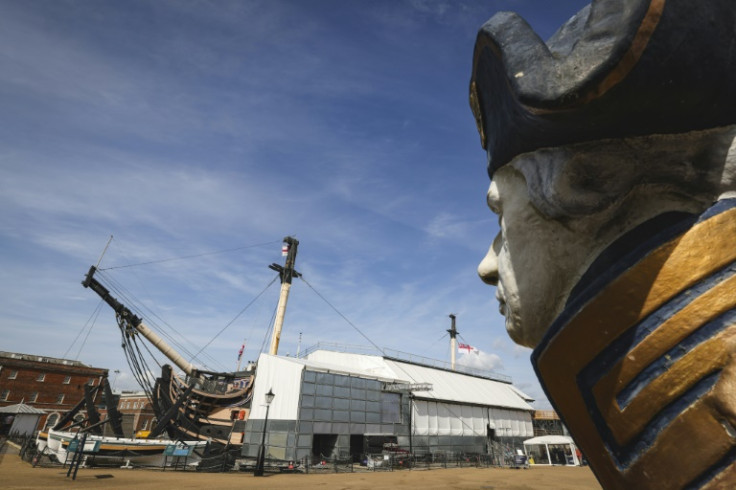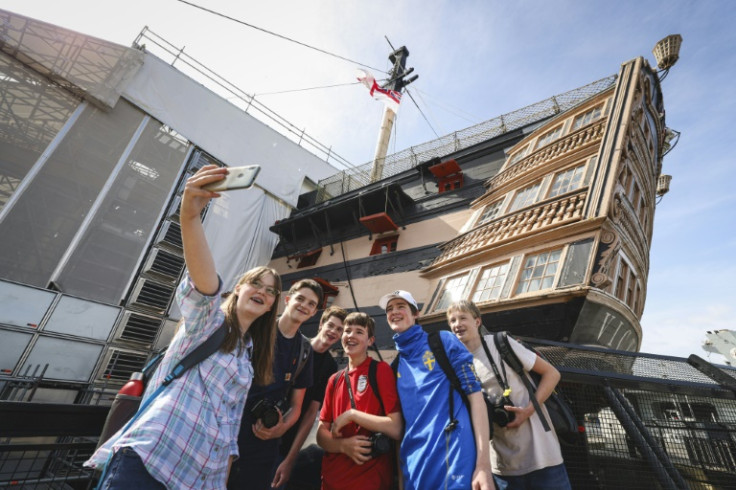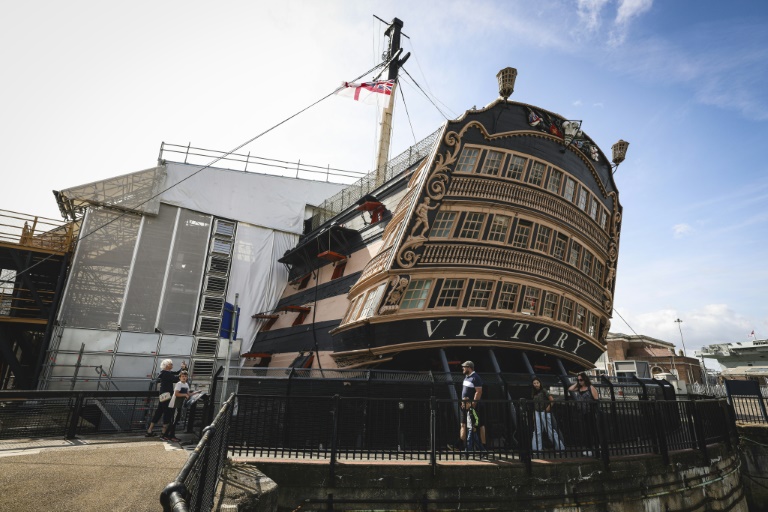HMS Victory has survived the cannonballs of Napoleon’s navy, being rammed by another warship, a World War II bomb, even UK navy plans to scrap her.
But nearly 260 years after it was launched, Victory — emblem of British maritime heritage and scene of naval hero Horatio Nelson’s death during the Battle of Trafalgar — is facing another equally deadly threat: the deathwatch beetle.
The 104-gun warship is undergoing a GBP45 million ($60 million) refit, which is one of the biggest of its kind carried out.
Visited each year by over 350,000 people in Portsmouth Dockyard on England’s southern coast, Victory’s huge renovation follows the unwelcome discovery that much of the wooden structure was affected by rot.
Shipwright surveys found that rain water had caused decay and created food for the dreaded beetles.
Without urgent action Victory would have continued to degrade, ending in “catastrophic structural failure”, conservation project manager Simon Williams told AFP.
Visitors to the ship currently find it’s middle section encased in scaffolding to allow a team of shipwrights to painstakingly replace parts of the “frames” — described as the vessel’s ribs.
After that “replanking” will see it given a new water-tight outer layer.
Project managers are also consulting with experts at the University of Southampton to ensure modern materials are employed where possible to provide maximum longevity.
For shipwright James Haycraft, however, much of the work involves the exact same techniques his predecessors would have used two-and-a-half centuries ago.
“It’s very much unchanged,” he said, as he planed a section from which rotten wood had been removed ready for a replacement.
“The tools I’m using — they solve the problem,” he said, pointing to his plane, a mallet and a chisel.
Once work on the middle section of the ship is finished, shipwrights will repeat the process on the bow and stern.
Other work will see the masts conserved and the entire ship re-rigged to return Victory to its previous glory.
It is not the first time Victory has been “saved” from neglect.
Until now, its survival has been more a case of “luck” than “judgement”, said Williams.
At one point, a plan by navy top brass to remove most of the multiple decks and cut it down to a two-decker was only halted by a public outcry.
“The Battle of Trafalgar connection is what saved her but I don’t think the navy were that sentimental about warships,” he said.
“I don’t think that would have saved her if the navy felt that scrapping her was the best option,” he added.
The public, however, have long taken Victory to their hearts.
Its story is inextricably intertwined with that of Admiral Lord Nelson, who masterminded a string of naval victories over the French culminating in the 1805 Battle of Trafalgar.
The battle in which he died defeating the combined French and Spanish fleet ended the threat of invasion by France under Emperor Napoleon Bonaparte. It earned Nelson national hero status.
At his funeral at London’s St Paul’s cathedral his coffin was carried by six fellow admirals and thousands lined the streets.
The 51-metre (169 feet) Nelson’s Column monument erected in his memory still towers over Trafalgar Square in the heart of the city.
The last time Victory underwent a revamp on the current scale was in 1814.
A “Save the Victory” campaign, spearheaded by the Society for Nautical Research, in 1922 also led to major work and it was opened as a museum six years later.
For nearly a century, visitors have been able to immerse themselves in what Williams calls the “really visceral experience” of what it would have been like to be an eighteenth century sailor.
Victory’s 820 crew lived and worked in cramped, low-ceilinged decks, sleeping in hammocks and surviving on rations of salted meat, cheese, dried peas and biscuits and a daily half pint (280 millilitres) of rum.
“The stories of bravery and of Nelson’s leadership continue to inspire,” added Williams.
Today there is relief that the 12-year project is successfully underway with completion pencilled in for 2032/3.
The vessel is the only surviving ship to have taken part in the American War of Independence, the French Revolutionary Wars and the Napoleonic Wars.
If the project goes to plan, it is hoped it will allow Victory to survive out in the open for at least another 50, maybe even 100, years.
AFP

AFP

AFP







